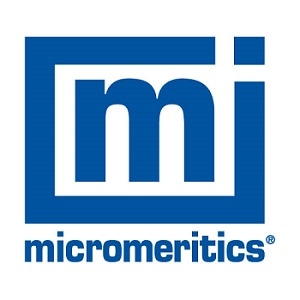Reaction rates of compounds, including medicinal products in powder or tablet forms, can be deduced from gas adsorption surface area values. The magnitude of the surface areas of these products affects their dissolution rates. The gas adsorption surface area values of powders and tablets are generally low.
Characterization of Medicinal Tablet Surface Area
The Materials Analysis Lab (MAL) at Micromeritics revealed that over-the-counter pain relievers have a broad range of surface area values. In this experiment, the nitrogen adsorption surface areas were determined by the MAL for four aspirin samples obtained from two major pharmaceutical companies, three house brands of aspirin and two brands of non-aspirin pain relievers. The Micromeritics Gemini Surface Area Analyzer was used to determine the values using standard, multipoint analysis protocol.
Experimental Results
Table 1 below summarizes the results for three house brands of aspirin. These samples have a wide range of reaction rates and dissolving time as they have a broad range of multipoint nitrogen surface area values. As a result, there will be a great difference in product performance amongst this group.
Table 1. Three house brands of aspirin
| Sample Number |
Surface Area (m2/g) |
| 1 |
0.3798 |
| 2 |
0.1941 |
| 3 |
0.8393 |
The experimental results for two major pharmaceutical brands of aspirin are given in Table 2, showing results for Samples 4, 5 and 6 that are taken from various lots of the same aspirin product. The similar surface area values mean that production processes are in good control. However, the surface area of Sample 7 is lower than Samples 4, 5 and 6, indicative of slower dissolution rate when compared to the other three samples. This means that the patient will receive the medicinal properties of Sample 7 at a slower rate when compared to Samples 4, 5, and 6.
Table 2. Two major pharmaceutical brands of aspirin
| Sample Number |
Surface Area (m2/g) |
| 4 |
0.4040 |
| 5 |
0.4058 |
| 6 |
0.3834 |
| 7 |
0.2699 |
Table 3. shows the surface areas of Samples 8 and 9. These values are provided for general comparison only. The surface areas and chemical compositions of these tablets influence their dissolution rates.
Table 3. Non-aspirin pain relievers
| Sample Number |
Surface Area (m2/g) |
| 8 |
0.3994 |
| 9 |
0.3018 |
Conclusion
Very low surface areas can be effectively measured using the Gemini Series of surface area analyzers, making the analyzers an efficient tool for the pharmaceutical industry to predict manufacturing consistency and product performance.
The Gemini analyzers provide rapid, reliable and reproducible multipoint surface area measurements, thus improving the physical characterization of medicinal products in research as well as quality control.

This information has been sourced, reviewed and adapted from materials provided by Micromeritics Instrument Corporation.
For more information on this source, please visit Micromeritics Instrument Corporation